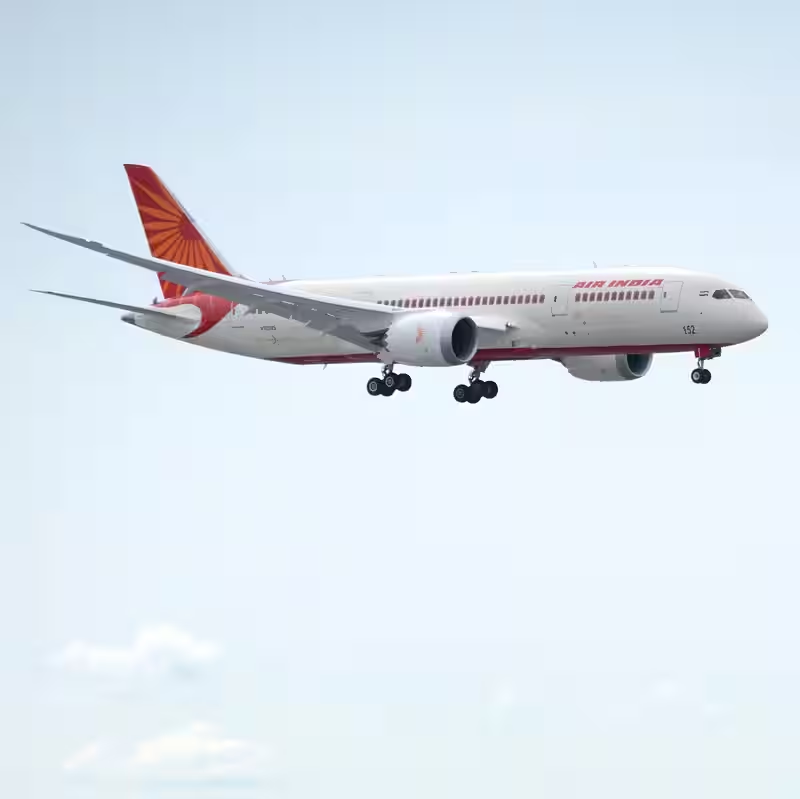Air India Pilots Demand Immediate Grounding of Boeing 787 Fleet
In a dramatic escalation of safety concerns, Air India pilots are calling for the airline to immediately ground its entire fleet of Boeing 787 Dreamliners after the aircraft’s emergency backup power system was unexpectedly activated during a routine flight over the weekend. This incident echoes a similar activation that preceded a deadly crash in June 2025, raising urgent questions about the aircraft’s reliability .
Table of Contents
- What Is the Emergency Power System?
- The Weekend Incident: What Happened?
- Pilots Sound the Alarm
- Air India’s Boeing 787 Fleet at a Glance
- Ongoing Investigations and Industry Reactions
- Sources
What Is the Emergency Power System?
The system in question is the Ram Air Turbine (RAT)—a last-resort backup device that automatically deploys when both electrical and hydraulic systems fail. The RAT extends into the airstream to generate emergency power, allowing pilots to maintain control of critical flight functions.
While designed as a safety net, the RAT is rarely used in commercial aviation. Its activation typically signals a serious onboard failure—and its appearance twice in recent months on Air India’s Boeing 787s has alarmed flight crews.
The Weekend Incident: What Happened?
On Saturday, October 4, 2025, an Air India Boeing 787 flying from New Delhi to London experienced an unexplained loss of hydraulic pressure mid-flight. The RAT deployed automatically at 35,000 feet, prompting the crew to declare an emergency and divert to Frankfurt, where the aircraft landed safely with no injuries reported.
Initial data from the flight recorder shows no prior warning of system degradation. Investigators from India’s Directorate General of Civil Aviation (DGCA) and Boeing are now analyzing maintenance logs and software diagnostics.
Pilots Sound the Alarm
The Air Line Pilots Association of India (ALPAI) issued a rare public statement demanding that all 27 Boeing 787s in Air India’s fleet be grounded until a full safety audit is completed.
“This isn’t just a technical glitch—it’s a pattern,” said Capt. Rajiv Mehta, ALPAI spokesperson. “When the same emergency system triggers in two separate incidents within months, including one that ended in tragedy, we cannot treat it as coincidence.”
The June 2025 crash—still under investigation—involved a different Air India 787 that went down in the Arabian Sea shortly after its RAT deployed during a domestic leg. All 176 on board perished.
Air India’s Boeing 787 Fleet at a Glance
| Aircraft Type | Number in Fleet | Avg. Age | Primary Routes |
|---|---|---|---|
| Boeing 787-8 | 13 | 9.2 years | Delhi–London, Mumbai–New York |
| Boeing 787-9 | 14 | 3.5 years | Delhi–San Francisco, Bengaluru–Frankfurt |
Boeing has defended the 787’s safety record, noting that over 1,000 Dreamliners have logged more than 10 million flight hours globally. However, internal memos leaked last month suggest the company has been aware of intermittent hydraulic sensor anomalies since early 2024.
Ongoing Investigations and Industry Reactions
The European Union Aviation Safety Agency (EASA) and the U.S. Federal Aviation Administration (FAA) are monitoring the situation closely. While neither has issued an airworthiness directive yet, both agencies have requested detailed incident reports from Indian authorities.
Passenger confidence may already be wavering. Flight booking data shows a 12% drop in 787 route reservations since the June crash—a trend Air India can ill afford as it works to rebuild its global reputation post-privatization.




